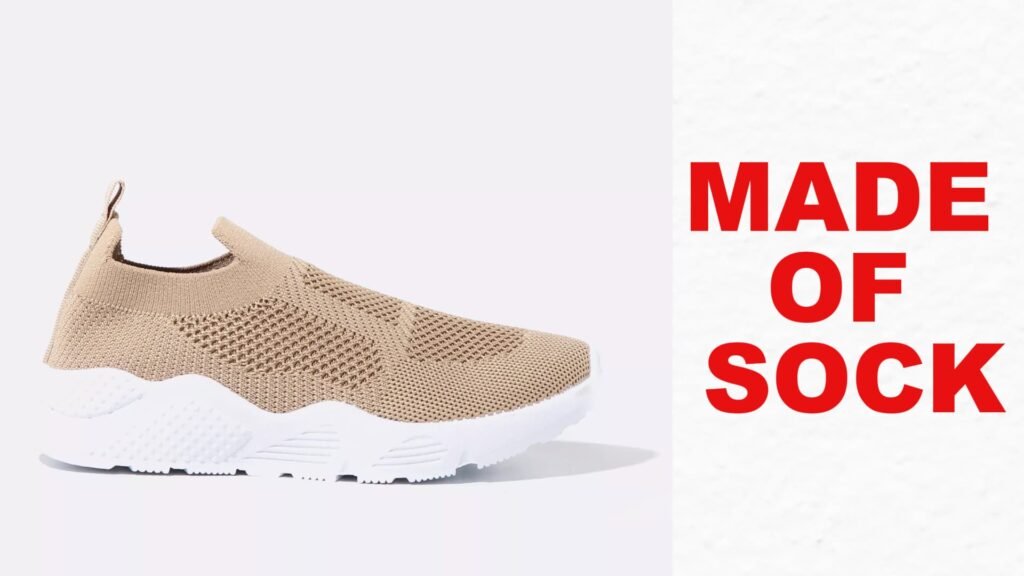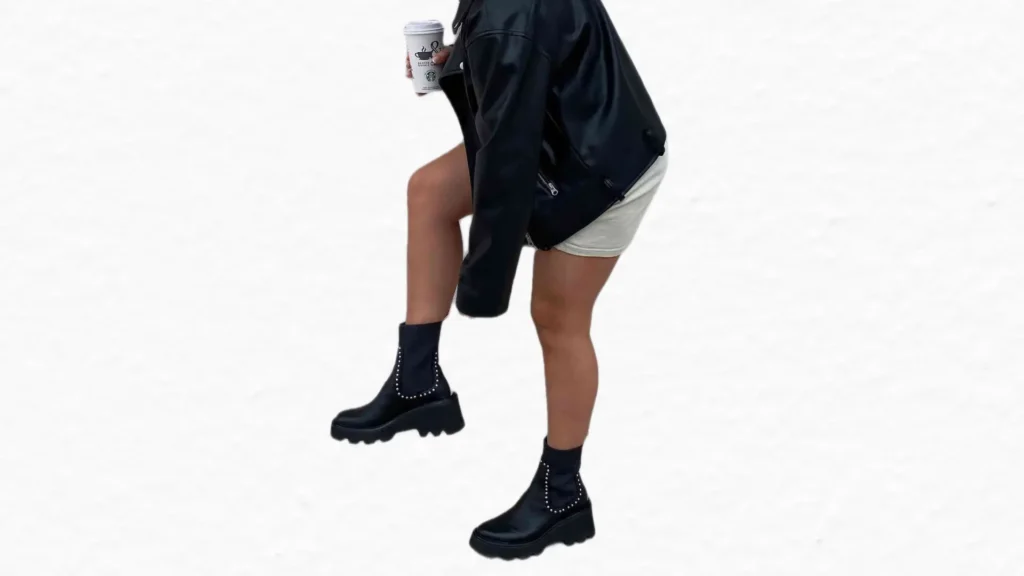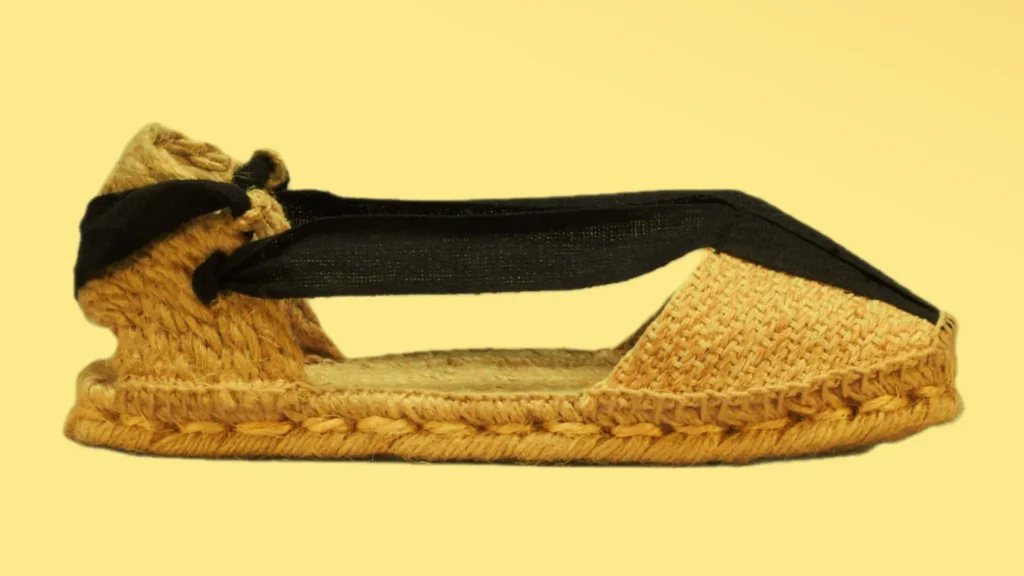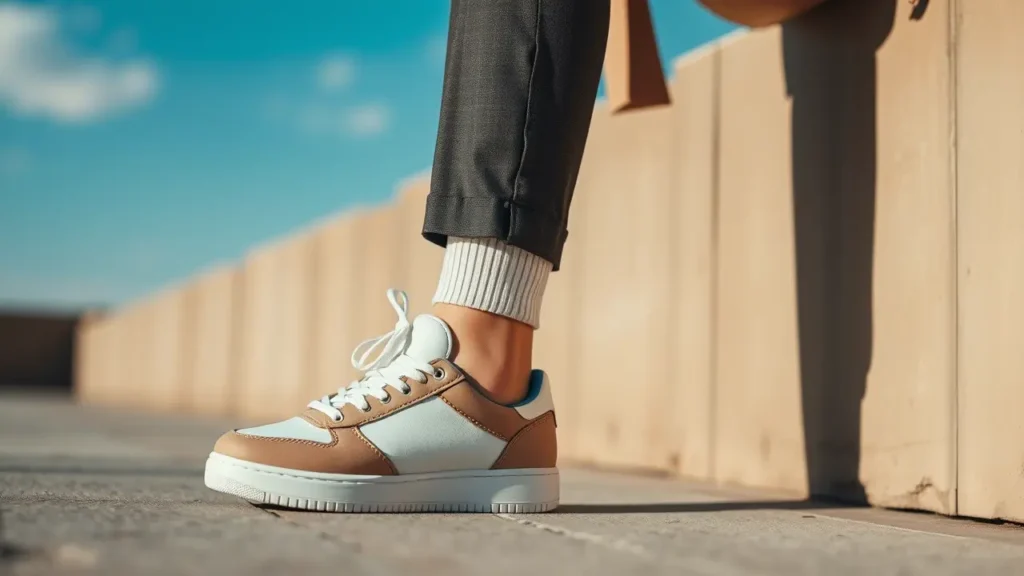In recent years, the world of footwear has seen a dynamic shift, with one style standing out for its unique blend of comfort, innovation, and style—sock sneakers. Seamlessly merging the flexibility of socks with the structure of sneakers, these shoes have captured the attention of fashion-forward consumers and athletes alike.
From high-fashion runways in Paris to bustling urban streets in Tokyo, sock sneakers are making a global statement. But what exactly is fueling this trend, and why are people across the globe choosing this hybrid design over traditional footwear?
The Rise of Sock Sneakers in Global Fashion
Sock sneakers are a style of footwear that blends the comfort of socks with the structure of athletic shoes. They are trending globally due to their lightweight design, versatility in styling, and emphasis on comfort without sacrificing modern aesthetics.
The Rising Star in Footwear Fashion
In 2023, over 15 million pairs of sock sneakers were sold worldwide. This number shows how quickly they’ve moved from niche curiosity to global must-have. Unlike traditional sneakers, sock sneakers hug the foot like a second skin. Their rise reflects a shift in how people value both comfort and style.
Sock sneakers combine two familiar ideas—socks and sneakers—into one seamless design. They feature a stretchy upper made from knit fabric, with a thin sole underneath. The result is a shoe that feels soft and flexible while still being durable enough for daily wear. These sneakers slip on easily and offer a snug fit without laces or stiff materials.
The concept began in performance sports where lightness and agility mattered most. Runners needed gear that could move with them, not against them. Designers started using breathable fabrics and minimal soles to reduce weight. Over time, this practical innovation caught the eye of fashion lovers and casual shoppers alike.
Modern life demands more movement and less fuss. People walk more, commute longer, and want to feel good while doing it. Sock sneakers provide all-day ease without looking sloppy or unstyled. They have become a go-to choice for those who value comfort but don’t want to give up fashion.
Why Sock Sneakers Are Everywhere Now
One reason sock sneakers are everywhere is their adaptability. They pair well with jeans, shorts, skirts, and tailored trousers. This flexibility makes them ideal for travel, work, or weekend outings. As more brands added versions to their lines, accessibility grew. Soon, everyone wanted a pair.
People today care more about how clothes feel than ever before. In a world full of fast-paced routines and long days, discomfort is no longer acceptable. Sock sneakers answer this need by offering support without tightness. They represent a new standard: stylish ease for real life.
Social media played a big role in pushing sock sneakers into the spotlight. Influencers wore them in street-style photos, travel vlogs, and casual videos. Seeing real people rock them helped others imagine owning a pair too. The trend spread organically, not through ads but through daily use.
Fashion has been leaning toward relaxed styles for years. Hoodies, joggers, and slip-on shoes dominate wardrobes now. Sock sneakers fit right into this laid-back lifestyle. They bridge the gap between sportswear and smart dressing. That balance makes them feel fresh and relevant.
These sneakers aren’t just for young trendsetters. Adults in their 30s, 40s, and beyond have embraced them too. Parents, professionals, and travelers appreciate the blend of function and flair. This wide appeal helps explain their staying power. It’s not just a fad—it’s a footwear evolution.
Walking, running, standing—they handle it all without pressure points or stiffness. The absence of hard edges means fewer blisters and sore spots. This focus on movement-friendly design sets them apart from bulkier options. For feet that do a lot, sock sneakers make sense.
Are Sock Sneakers Comfortable for Daily Wear?
Yes, sock sneakers are comfortable for everyday wear because they are designed with flexibility, breathability, and a snug fit that moves with your foot.
A Comfort Revolution Underfoot
In 2024, over 60% of people who bought sock sneakers said they wore them daily. That’s more than just a fashion statement—it’s proof of real-world comfort. These shoes blend soft fabric with supportive soles to create something both light and reliable. For anyone on their feet most of the day, they offer a welcome change.
Sock sneakers start with a stretchy upper that fits like a second skin. This design wraps the foot without tight spots or pressure points. There are no stiff panels or thick seams to rub the ankle. The result is a shoe that feels like it moves with you, not against you.
Despite their soft look, sock sneakers hold up well under daily use. Their soles are thin but firm enough to protect from rough surfaces. They are made to last through walking, standing, and running errands. Unlike bulky trainers, they don’t weigh the foot down.
One reason these sneakers feel so good is how they hug the foot. The knit material stretches where needed but stays secure in place. No laces or straps mean less hassle and fewer adjustments. Feet stay in place without feeling squeezed or restricted.
Warm weather or long walks can make regular shoes feel stuffy. Sock sneakers use breathable fabrics that let air flow around the foot. This helps reduce sweat and keeps feet feeling fresh. Even in warm climates, they remain cool and dry.
While lightweight, sock sneakers still offer support for all-day wear. Most have cushioned soles that absorb small shocks from sidewalks and floors. Arch support may be minimal, but many models include gentle shaping for comfort. For casual wear, this level of support is more than enough.
People who walk a lot during the day—teachers, delivery workers, shoppers—find them useful. They are easy to slip on and off, yet stay secure while moving. With no break-in time, they feel good from the first step. That makes them perfect for unpredictable days.
Many users report wearing sock sneakers for eight hours or more without discomfort. Commuters love them for quick travel and long waits. Office workers pair them with casual Friday looks. Parents find them easy to grab when chasing kids or heading out fast.
Designed for Daily Life
These sneakers were made with real routines in mind. They handle short trips to the store and long city strolls alike. Whether indoors or outside, they adapt to different surfaces. Their flexible sole bends with each step, making movement feel natural.
Traditional shoes need time to soften before they feel good. Sock sneakers skip that step entirely. From the moment you put them on, they feel broken in. This instant comfort makes them ideal for busy lives. No blisters, no pain—just go.
Comfort means nothing if a shoe doesn’t look good too. Sock sneakers come in clean lines and modern colors. They match jeans, skirts, and workwear with ease. Looking sharp doesn’t have to mean sore feet anymore.
Older adults and professionals also enjoy their ease and support. People who stand for long periods appreciate the cushioned base. Those recovering from foot strain find them gentle and forgiving. This broad appeal shows how truly wearable they are.
Some versions come with thicker knits for cooler months. Others use lighter weaves for summer heat. Water-resistant coatings help in rainy cities or damp mornings. Whatever the season, there’s a sock sneaker ready for it.
Daily wear means dealing with dust, dirt, and scuffs. Many sock sneakers are machine-washable or easy to wipe down. This makes them practical for real life, not just special outings. Staying fresh is simple with the right care.
The Global Fashion Impact of Sock Sneakers
Sock sneakers have influenced global fashion trends by blending comfort with style, redefining casual footwear, and inspiring more relaxed, functional designs across major brands and fashion houses.
A Quiet Revolution in Footwear
Sock sneakers are one of the fastest-growing categories in fashion. This wasn’t just a passing trend—it was a shift in how people think about shoes. The rise of sock sneakers signaled that comfort was no longer optional in style. It became a must-have feature.
The design roots of sock sneakers lie in athletic performance gear. They brought the lightweight, breathable qualities of running shoes into everyday fashion. Soon, streetwear adopted the look, pairing it with jeans, cargo pants, and oversized jackets. This mix of function and flair changed how casual dressing was approached.
Offices, schools, and social events started to see more relaxed dress codes. Sock sneakers fit perfectly into this new normal. They offered a polished yet comfortable alternative to loafers or bulky trainers. As a result, they helped push forward a broader acceptance of casual, wearable fashion.
Balenciaga, Prada, and Gucci introduced their own versions of sock sneakers. These high-end takes made the style desirable to fashion-forward buyers. What began as a practical shoe became a runway staple. That shift proved its lasting impact on the industry.
Sock sneakers popularized sleek silhouettes and minimalist color schemes. Brands leaned into monochrome tones, clean lines, and seamless uppers. These looks influenced other shoe styles, from boots to sandals. The aesthetic spread beyond footwear into apparel and accessories too.
As demand grew, so did experimentation with fabric blends. Knits became softer, lighter, and more durable. Some models used recycled plastics or plant-based fibers. This push for innovation led to more eco-friendly options across the fashion world. Sustainability and style began walking side by side.
Shaping the Rise of Athleisure
Athleisure—a mix of athletic and leisure wear—became a dominant style in the last decade. Sock sneakers played a key role in that movement. They bridged the gap between workout clothes and daily outfits. Their presence made it easier to blend gym wear with street-ready fashion.
Before sock sneakers, stylish shoes meant stiff soles and tight fits. Now, comfort is expected, not sacrificed. Other shoe types followed suit—loafers became slipper, heels got padded, and boots turned flexible. This change shows how deeply sock sneakers reshaped expectations.
From Tokyo to Toronto, sock sneakers found fans in cities around the world. Their simple, modern look worked across different styles and climates. Urban youth wore them with shorts and tees; professionals paired them with chinos. Their universal appeal made them a truly global trend.
Average shoppers started building outfits around sock sneakers. They matched easily with denim, skirts, and tailored trousers. This versatility made them a go-to choice for travel, work, and weekend plans. As more people wore them, they became part of daily fashion culture.
Designers began to rethink what shoes could be. The success of sock sneakers showed that old formats could be reinvented. Hybrid styles emerged—part sneaker, part sandal, part boot. Footwear became more experimental, playful, and user-focused.
Minimalist dressing gained popularity in the past few years. Sock sneakers fit right into that trend with their clean shapes and soft colors. They helped define a new kind of simplicity: stylish without trying too hard. Less became more, on your feet.
Wearing sock sneakers became a way to signal personal style. They stood out without being flashy. People who wanted to look modern but stay grounded in comfort chose them. In many ways, they became a signature piece of the 2020s wardrobe.
The influence of sock sneakers stretched into other areas of fashion. Bags, hats, and clothing adopted similar stretchy, snug-fitting features. The idea of “sock-style” comfort moved beyond shoes. It became a design philosophy across fashion categories.
Why Sock Sneakers Thrive in South Korea and Japan
Sock sneakers are popular in South Korea and Japan due to their sleek design, comfort for urban lifestyles, strong presence in streetwear culture, and endorsement by local influencers and fashion icons.
A Sneaker Trend That Fits the City
In 2024, over 8 million pairs of sock sneakers were sold across South Korea and Japan. This growing number reflects how well the style fits daily life in fast-paced Seoul and Tokyo. With packed subways, long commutes, and crowded streets, people need shoes that feel light and move with them. Sock sneakers deliver exactly that.
The streets of Seoul and Osaka demand constant motion. People walk a lot, from subway stations to offices, shops, and cafes. Sock sneakers offer flexibility without sacrificing style. Their slip-on design makes them easy to wear all day. In places where speed and ease matter, these shoes make sense.
Japanese and Korean fashion has long embraced clean lines and subtle colors. Sock sneakers fit right into this aesthetic with their smooth, seamless look. They come in muted tones and slim silhouettes that match casual and smart outfits alike. For young fashion lovers, they’re the perfect finishing touch.
Streetwear is more than a trend in these countries—it’s a lifestyle. Harajuku and Hongdae are known for bold self-expression through clothes. Sock sneakers became part of that scene early on. Brands launched limited drops, sparking hype and long queues. What started as niche became mainstream.
Local celebrities and social media stars helped push sock sneakers into the spotlight. On Instagram and TikTok, they styled them with jeans, skirts, and oversized hoodies. Seeing real people wear them made others want to try too. The trend spread quickly, not through ads, but through daily fashion choices.
Designed for Fast Fashion Cycles
South Korea and Japan are global leaders in quick-response fashion. Stores release new styles every week to keep up with changing tastes. Sock sneakers fit perfectly into this model. They can be produced fast, updated often, and matched with many looks. For fashion lovers who want something fresh each season, they’re ideal.
Fashion in these countries balances good looks with function. Sock sneakers provide both. Their soft knit upper moves with the foot, making them great for walking and standing. They don’t crease easily and slip on without effort. In a culture that values efficiency and neatness, this matters a lot.
Both countries experience four clear seasons, and sock sneakers adapt well. Thicker versions work for spring and fall, while lighter ones suit summer. Some models include water-resistant finishes for rainy days. This ability to shift with weather helps explain why they stay in rotation year-round.
Korean and Japanese brands have led innovation in fabric blends. They use breathable knits, moisture-wicking threads, and stretchy weaves to improve comfort. These upgrades make sock sneakers more than just stylish—they become practical for daily wear. As tech improved, so did popularity.
Workplaces in major cities are leaning toward relaxed dress codes. Young professionals now pair chinos with turtlenecks or tailored shorts with button-ups. Sock sneakers complete these outfits with a modern edge. They bridge the gap between formal and casual, fitting today’s hybrid office culture.
With travel rebounding post-pandemic, people want lightweight, compact shoes. Sock sneakers fold easily into backpacks or suitcases. They don’t take up space and don’t need extra shoe bags. For weekend getaways or city-hopping trips, they’ve become the go-to choice.
Students in universities and high schools across South Korea and Japan wear them regularly. They match school uniforms, sportswear, and trendy outfits alike. Teachers see them in classrooms; friends spot them in cafés. Their presence in youth culture ensures long-term staying power.
Sportswear influence runs deep in Asian fashion. Sock sneakers sit neatly at the crossroads of athletic and fashionable. They borrow from running shoes but look sharp enough for streetwear. This mix of worlds makes them versatile and widely accepted.
Comparing Sock Sneakers and Traditional Sneakers in Performance
Sock sneakers offer less structured support and shock absorption than traditional sneakers but excel in flexibility, breathability, and lightweight comfort for everyday movement.
A New Kind of Performance
In 2024, more than 40% of young adults in global cities chose sock sneakers over bulkier styles. This shift shows how people define performance differently now. It’s no longer just about running fast or jumping high—it’s about walking far, standing long, and staying comfortable all day. Sock sneakers answer that need in their own way.
Traditional sneakers are made with thick soles, cushioned heels, and reinforced sides to handle high-impact activity. They’re built for sports, gym sessions, or long runs. Sock sneakers focus on low-impact movement instead. Their thinner soles and stretchy uppers make them great for walking, not sprinting.
One clear difference is how much they weigh. Most sock sneakers come in under 250 grams per shoe. Traditional athletic sneakers can go above 350 grams. That gap matters when you’re on your feet all day. Less weight means less strain, especially during casual use.
The knit upper of a sock sneaker bends and stretches with every step. Feet move freely without resistance from stiff panels or tight laces. In contrast, traditional sneakers have structure that limits motion but offers stability. For daily tasks, flexibility feels better than rigidity.
Sock sneakers use open-knit weaves that let air pass through easily. This keeps feet cool during warm days or long walks. Traditional sneakers may include breathable mesh, but many also have synthetic overlays that trap heat. When it comes to airflow, sock sneakers hold an edge.
If you need strong arch support or ankle stability, sock sneakers fall short. They lack the molded insoles, heel counters, and firm midsoles found in traditional styles. People with foot pain or biomechanical issu
Sock sneakers usually slip on without laces or straps. This makes them easy to wear but gives less control over fit. Traditional sneakers allow tighter lacing for a secure feel. If you’re jogging or changing direction fast, this matters. For walking around town, it doesn’t.
Shock Absorption: The Big Gap
Running or jumping sends force through your feet and legs. Traditional sneakers absorb much of that impact with foam or gel systems. Sock sneakers don’t have these features. Their thin soles transfer more pressure to the ground. For light movement, it’s fine. For heavy use, it’s not enough.
Sock sneakers wear out faster under intense activity. Thin soles and soft fabric don’t last as long as rubber outsoles and tough uppers. If used for daily errands or commuting, they hold up well. But for sport or fitness, traditional sneakers are sturdier and more reliable.
People choose sock sneakers for their sleek look and ease of wear. They blend into modern wardrobes better than bold, bulky trainers. However, they don’t cover all the bases that traditional sneakers do. Each style has its place depending on what you need them for.
Most sock sneakers are best for dry, mild conditions. Wet or rough terrain can be a problem due to thin materials and limited grip. Traditional sneakers have waterproof layers and deeper treads. In rainy or rugged settings, classic designs perform better.
Active athletes and gym-goers lean toward traditional sneakers. They need support, traction, and protection. Office workers, shoppers, and city dwellers prefer sock sneakers. They want something stylish, light, and easy to walk in. Each group finds what it needs in different styles.
For average users, sock sneakers win in all-day wear tests. Feet stay relaxed, shoes stay light, and steps feel smooth. There’s no break-in time or tight spots. Traditional sneakers can cause rubbing or pressure if worn all day without proper fit.
The global rise of sock sneakers signals more than just a passing trend—it represents a shift in how people value comfort, versatility, and minimalist design in their everyday wear. From major luxury labels to accessible streetwear brands, the adoption of sock sneakers underscores their widespread appeal.
As consumer preferences continue to evolve, it’s clear that sock sneakers are not only reshaping the sneaker market but also influencing the broader fashion landscape.




